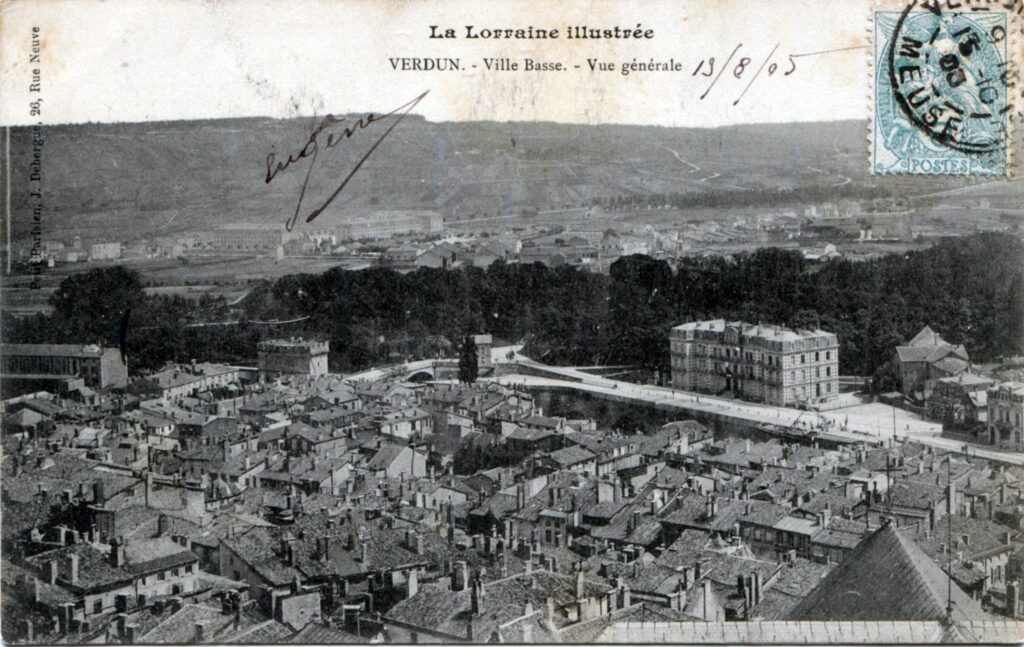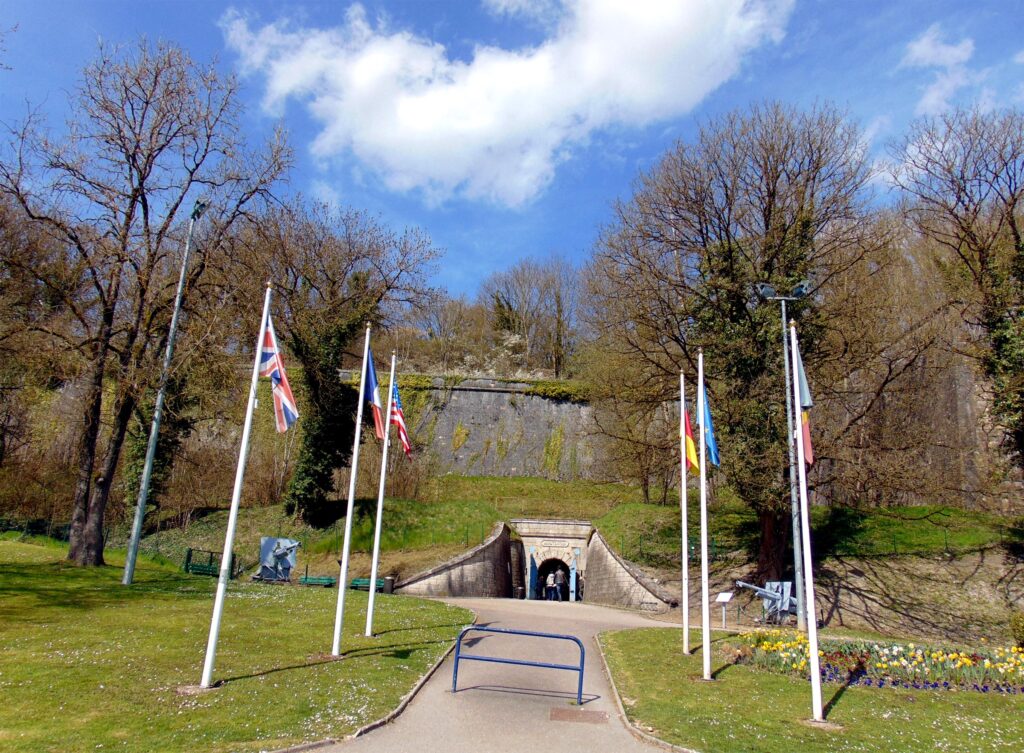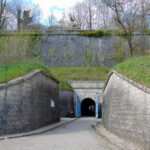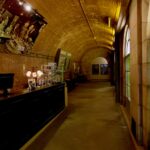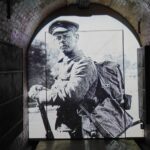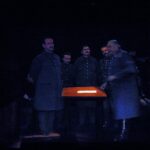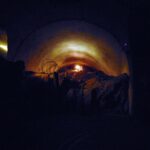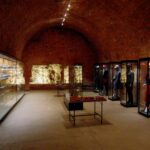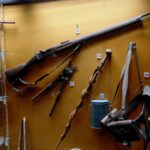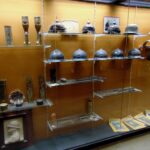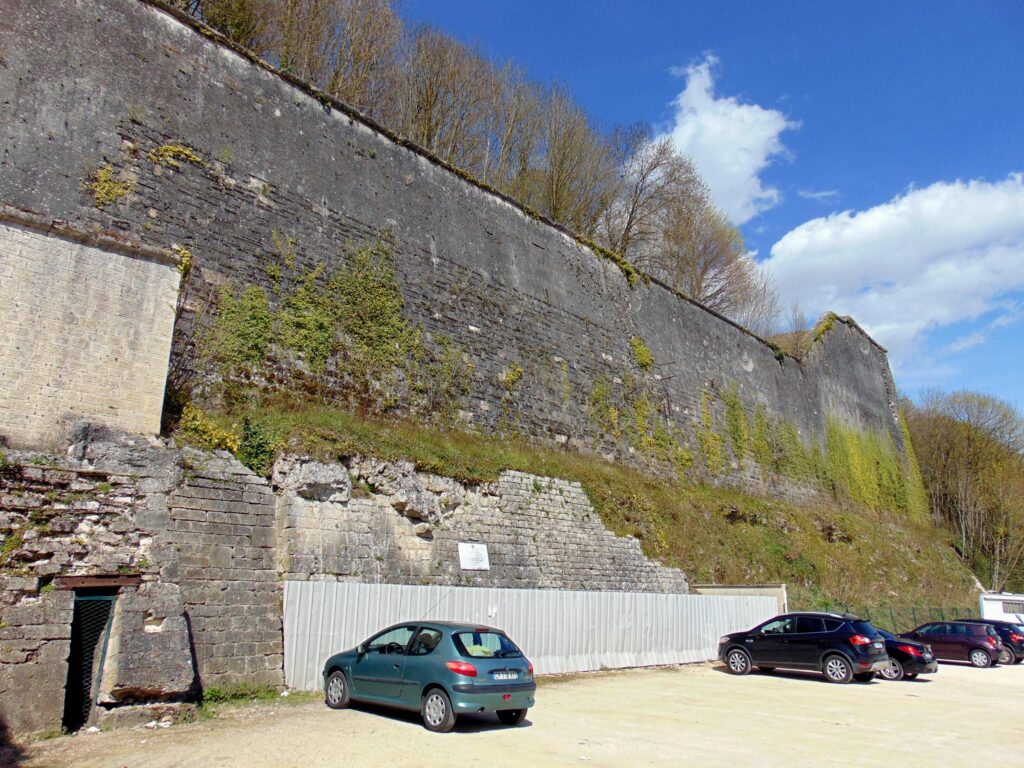The Verdun Citadel or the fortress (in French – La citadelle souterraine de Verdun) located in the city center is a beautiful engineering and fortification structure and an architectural monument of France from several eras at once. The citadel and the city of Verdun gained worldwide fame during the First World War.
Fortress Verdun Citadel, the history of creation and construction 1567-1634-1886.
Occupying an important strategic position, Verdun has been a fortified area for centuries. In 1552, when King Henry II of France annexed the city, it was decided to modernize the ancient medieval fortifications in accordance with the requirements of the era and architecture of this time. This is how the citadel appeared in the form we see it today. More about city history:
Verdun Citadel and the First World War, 1916.
February 21, 1916 at 8:15 am, the German army begins its largest offensive on Verdun. The first shells fall on the fortress. As planned in advance, personnel and government services take cover from enemy fire in these dungeons, located 16 meters of hard rock underground. Since that time, the citadel has been transformed into a small underground city. Read more…
Memorial to a French soldier and citadel, 1920
Beginning in 1916, the President of France took all measures to perpetuate the memory of the soldiers of the French army who died on the battlefields. Cemeteries and memorials were organized. On November 2, 1920, a bill was adopted to commemorate the soldiers who died defending the Fatherland, who died for France. Particular attention is paid to the search for dead soldiers on the ground. For those who could not be identified, the “Tomb of the Unknown Soldier” is being erected under the Arc de Triomphe in Paris and in other regions of France. Verdun is also included in the most important battle sites and the citadel is used in all these memorial events. Read more…
Fortress “Verdun Citadel”, one of the best museums in France.
Today, the citadel is one of the main sights of Verdun, and in terms of military-historical tourism, it is one of the main sights of France of world importance. Inside the citadel, a magnificent military history museum is organized, combining both the best traditions of military museums – uniformed dummies, military relics, artifacts and corners of the living history of the First World War, and the most modern methods of museum work – visualization, multimedia and holographic stories and displays of history.
Verdun Citadel Tour Guide
It is best to start exploring the Verdun Citadel with a satellite image, where you will see a regular polygon. The southern part of the fortress, where the entrance to the dungeon and the museum is located, overlooks the Meuse River. The north-eastern side of the citadel is adjacent to the “high city”, the central historical part of Verdun. There are medieval maps of the city and all its fortifications, but by the First World War everything had changed a lot. Only individual objects and sections of the medieval city have been preserved. Verdun Citadel is considered an underground fortress, but the outer walls, ramparts and bastions are perfectly preserved. There are several excellent walking routes around the outside of the fortress, which require about 40-50 minutes. If you get close to the wall, you will see its large size. Dangerous areas are fenced off from visitors. Independent tours or with a guide – around the fortress and on its top without going into the dungeons are possible on any days and hours at your request. Please note that there is a long waiting list; advance reservations for the dungeon tour are required during the high season.Underground tours of the museum inside the fortress are carried out on special trailers with a capacity of 9 people. The cart moves automatically on rails, almost along the route of delivery of ammunition and food during the Battle of Verdun. The movement occurs almost in twilight, which makes the trip more interesting and emotional. The trolley passes through various underground corners of the fortress, where there are “living history corners” showing in a visual form the various services of the citadel garrison in the First World War. The air temperature, even in summer, is about +7 degrees Celsius (take this into account when choosing clothes*)
During the tour you will receive a free audio guide in English, French and German. It is very pleasant and authentic, of course, to listen to these videos in the original language of French soldiers and marshals. It turns out to be a complete immersion in that era.
- Citadel museum entrance
- Underground halls, souvenir shop
- Multimedia films on big screen
- Holograms show, living history
- Underground trip, exhibitions
- WW1 soldier uniform and insignias
- Historical small arms collection
- German and French helmets collection
- Cinema posters
Boutique and souvenir kiosk. Near the tour check-in desk, the Citadel Museum has a small bookshop and a souvenir stall on the theme “World War I, France, Verdun and Lorraine.” Here you can buy books and reference books (mostly in French, English and German), maps of the battles of Verdun and many postcards with various views of Verdun and the Citadel. Keychains, mugs, posters and even drawings are also good souvenirs. There are also commemorative medals from the Citadel fortress – Verdun. All this can be purchased after riding on the cart near the entrance. Instagram, “selfies” and classic “memory” photos are, of course, classics for visiting such museums. But during historical tours, sometimes you want to immerse yourself in the era of the early 20th century and make retro-style souvenirs for yourself or your friends. You can buy a postcard with a view of the citadel at the souvenir kiosk, make an inscription and a drawing, and then send it yourself or ask the guide to send it (you can also open it) from the local post office with the cancellation stamp “Verdun” and the date of your visit. These postcards have always been classic collectibles and will soon be as extinct as typewriters were until recently. In a hundred years this artifact will be very expensive, as it is very rare
Citadel Museum practical tourist information.
Opening hours. Visits to the “citadel” museum and underground tours are possible in the following months and times:
The museum is closed from New Year’s Day until January 19.
In January-February the museum is open from 9:30 am to 12:30 and from 1:30 pm to 5:30 pm.
In March the museum is open from 9:30 am to 5:30 pm.
In April-May and October-November the museum is open from 9 am to 6 pm.
In June-July-August-September the museum is open from 9 am to 7 pm.
In December the museum is open from 10 am to 12 and from 2 pm to 5 pm.
The museum is closed from December 22nd to December 31st
The schedule may change, please check before your trip.
Entrance fees for adults are 8 Euro/person. Ticket price for children from 8 to 16 years old – 4 Euro. Family rate (2 adults, 2 children) – 20 Euro
Discount ticket to the museum – for students, military personnel, veterans, etc. — 7 Euro
Group rate (from ten people + 1 accompanying person free) – 3 Euro
Unofficial information, reviews and useful tips. Museum specifics.
France is a country with its own traditions and culture of drinking wine. Many tourists from all over the world, following the “French” tradition, drink a glass of good local wine four times a day. Some tourists follow their traditions and drink beer or whiskey. Usually this is enough to withstand a 30-minute tour through the cool casemates of the fortress. The consumption of alcoholic beverages in tourist areas is not prosecuted by the police unless public order is violated. But it’s better to take some clothes with you so that you don’t feel cold: a jacket or sweater.
How to get from Paris to Verdun Citadel. Verdun has a worldwide reputation as a battlefield, but is a small city in a region far from the capital. You can get there from Paris by TGV train with a bus transfer according to the schedule. Bus and train services are quite rare, as most tourists arrive by car or minivan. All the main tourist attractions, including forts, trenches, memorials, are located outside the city in different places. Taxis can be taken near the tourism office, but there is no guarantee. The Citadel is located on the outskirts of the city opposite the bus station. You can take a taxi (if available) or walk about 30-40 minutes through the city center.
According to French standards, a trip of more than 3 hours on the highway is very long. The car will take you to the other end of the country. A one-day express tour from Paris to Verdun is possible if you:
You will get up very early, at 6-7 am. You will include in your express program a visit to the Citadel, a short sightseeing tour of the city, a trip to 2-3 places (no more). Return back to Paris late in the evening. The driver will help you reserve a time for visiting the dungeon and museum in advance.
An alternative option includes a 2-day trip with an overnight stay in Verdun. On Day 1 you will visit the battlefields and museums of Champagne, but instead of returning to Paris you will continue on to Verdun. The next day you will visit the Citadel and the main sites of the Battle of Verdun. This option is more comfortable with reasonable prices, especially for a company of 2-3 people. You can find out more about route options from Paris for 1-7 days using the link below.
- Private tours from Paris by a car trough Champagne for 1-7 days

